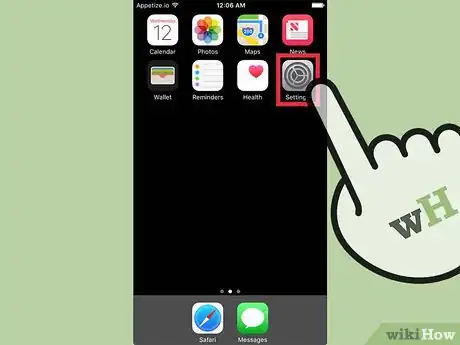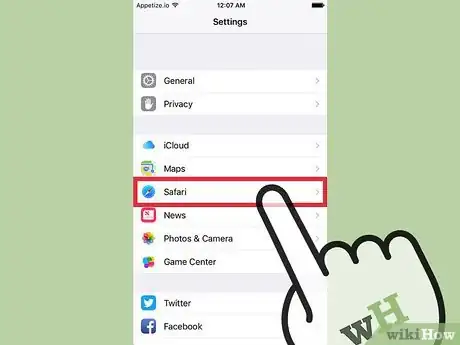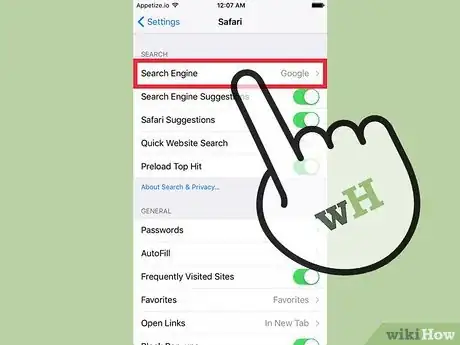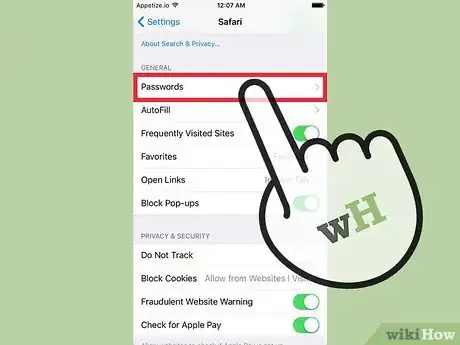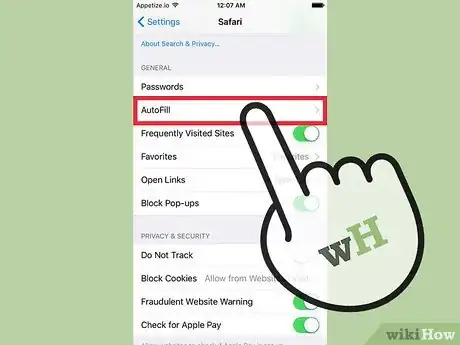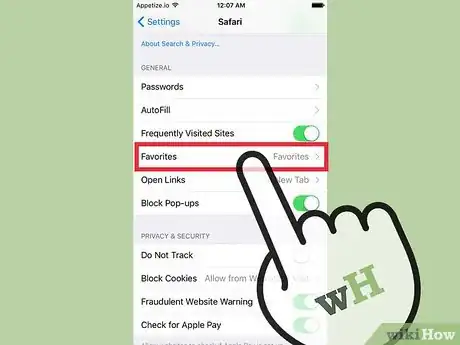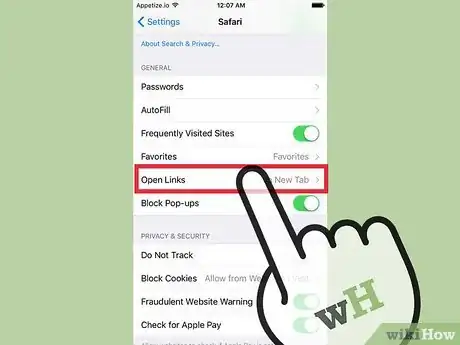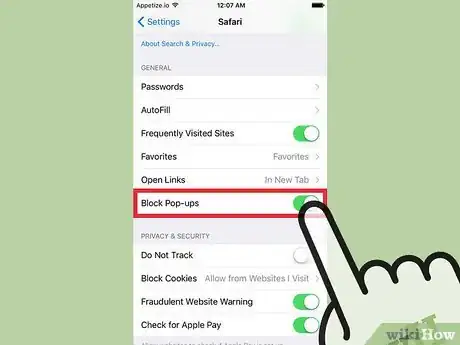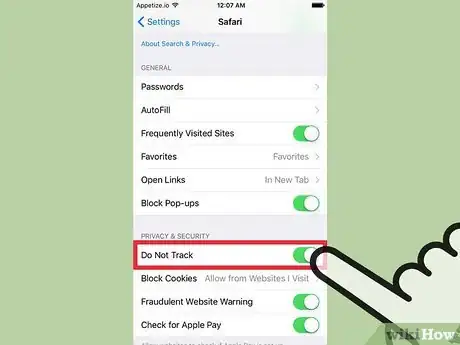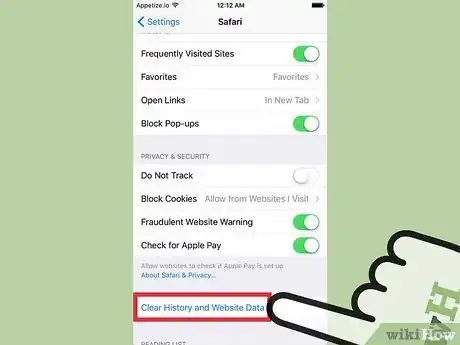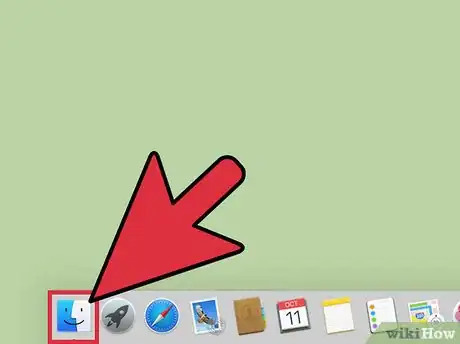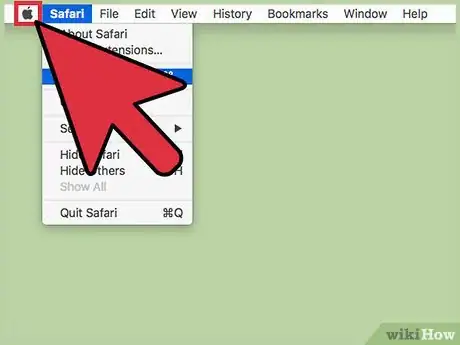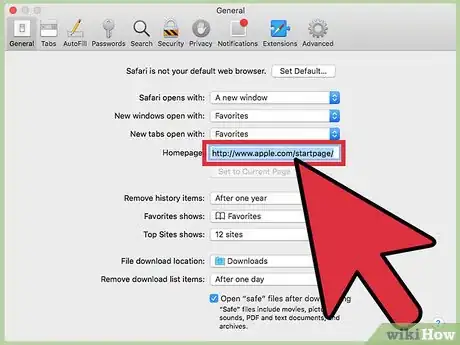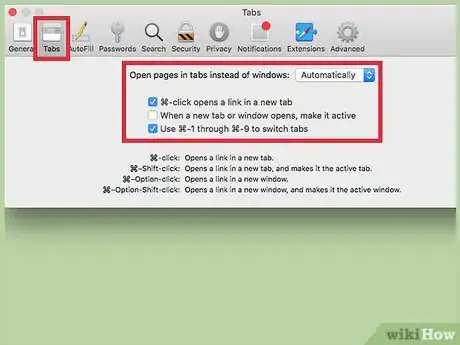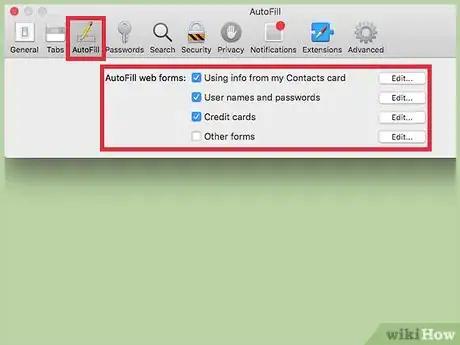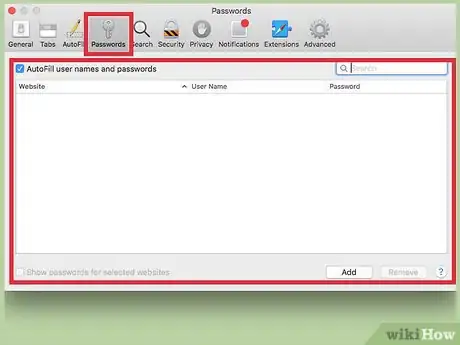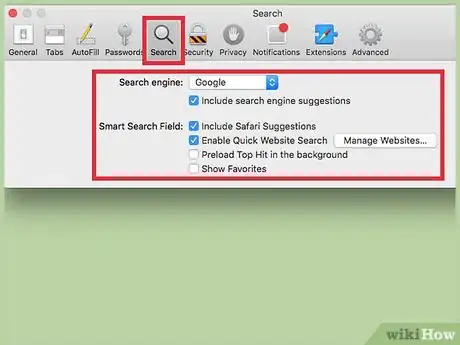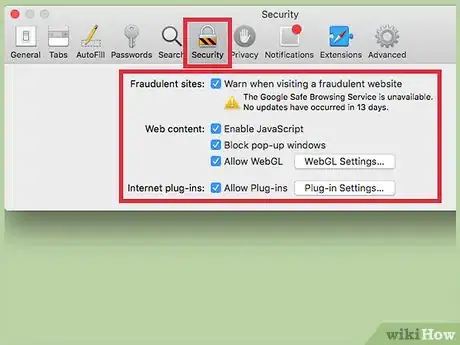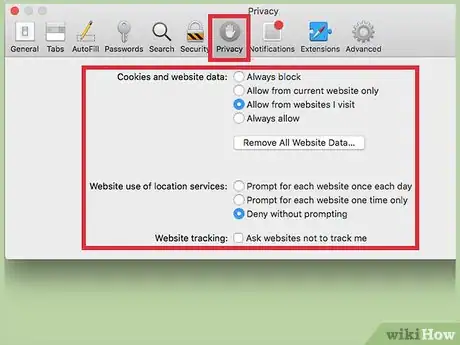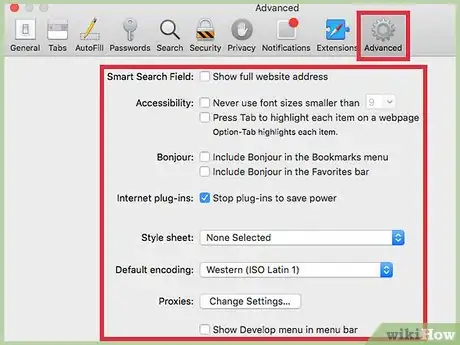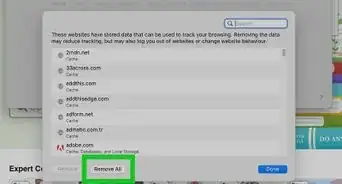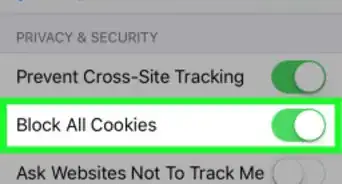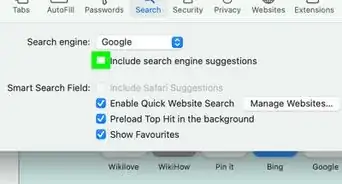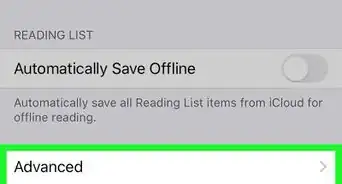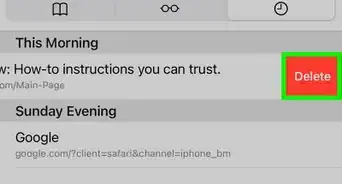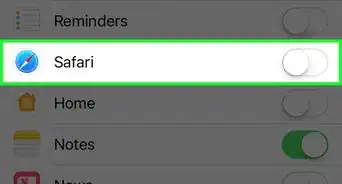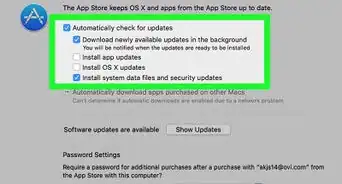X
This article was co-authored by wikiHow Staff. Our trained team of editors and researchers validate articles for accuracy and comprehensiveness. wikiHow's Content Management Team carefully monitors the work from our editorial staff to ensure that each article is backed by trusted research and meets our high quality standards.
This article has been viewed 183,335 times.
Learn more...
To change your Safari preferences on an iOS device, you'll need to use your device's Settings app instead of the Safari app. On macOS computers, you can change the settings from Safari's Preferences menu. Both the mobile and the desktop share some similar settings, but the desktop version has many more options available.
Steps
Method 1
Method 1 of 2:
iOS
-
1Tap the Settings app on your device. You'll find this on one of your Home screens. The icon looks like a set of gears. It may be in a folder labeled "Utilities."[1]
- This method works for iPhone, iPad, and iPod Touch.
-
2Scroll down and tap "Safari." You'll see it grouped with various other Apple apps like Maps, Compass, and News.Advertisement
-
3Tap "Search Engine" to change your default search engine. You can select from Google, Yahoo, Bing, and DuckDuckGo. This will be the search engine that Safari uses when you type a search into the address bar.
- The "Search Engine Suggestions" feature will provide search suggestions from your default search engine as you type.
- The "Safari Suggestions" provides search suggestions curated by Apple.
-
4Tap "Passwords" to view your stored passwords. You'll be prompted to enter your passcode before you can view them. These are passwords that you've saved for various websites.
- Tapping a password entry will display the stored username and password for the site.
-
5Use the "AutoFill" menu to set your AutoFill settings. AutoFill is the information that automatically appears in forms. This can make it easier to fill out your address or payment information. The AutoFill menu allows you to set your contact information, as well as manage your stored credit cards.
-
6Switch your Favorites folder with the "Favorites" option. This will let you choose which of your Favorites folders to use. You can have multiple folders and switch between them as necessary.
-
7Choose how links are opened with "Open Links." You can choose to have links open in a new tab, or in the background. When you choose "In Background," links are opened in new tabs but aren't switched to immediately.
-
8Turn on the pop-up blocker to prevent pop-ups. Tap the slider next to "Block Pop-ups" to have Safari block as many pop-ups as possible. This will prevent pop-up ads from loading, but may also cause problems with some sites that rely on pop-ups.
-
9Enable "Do Not Track" to help prevent websites from tracking your browsing. When this feature is enabled, Safari will tell each website that you visit that you don't want to be tracked. It is up to the website to honor this request, and not all do.
-
10Tap "Clear History and Website Data" to delete your browsing data. This will delete all of your Safari browsing history along with your cookies and cache. The browsing history on all of your connected devices will be deleted as well.
Advertisement
Method 2
Method 2 of 2:
macOS
-
1Open the Safari program. You can change your Safari settings from within the Safari browser. Make sure that it's the active program so that the "Safari" menu appears in the upper-left corner.
-
2Click the "Safari" menu and select "Preferences." This will open a new window with your Safari preferences, opened to the "General" tab.
-
3Set a homepage. The "Homepage" field allows you to set a specific page that will open when you start Safari. You can click the "Set to Current Page" button to use the page that is open as your new homepage.
-
4Use the "Tabs" section to change your tab behavior. You can choose how links are opened, and enable shortcuts for opening tabs and switching between them.
-
5Click the "AutoFill" tab to set your AutoFill information. You can choose which information is used to automatically complete forms and credit card purchase fields. Click the "Edit" button next to each one to choose the content you want to use.
-
6Use the "Passwords" tab to view your stored passwords. You'll see all of the websites that you have passwords stored. Double-click a password to reveal it. You'll be prompted for your Mac user password in order to proceed.
-
7Click the "Search" tab to set your search preferences. You can use the "Search engine" drop-down menu to select the search engine that you want to use for the Safari address bar. You can select Google, Bing, Yahoo, and DuckDuckGo. When you type something into your address bar, this is the search engine that will be used.
- You can enable or disable various search preferences underneath this menu, including using Safari Suggestions.
-
8Use the "Security" tab to enable or disable security settings. These include warnings for known fraudulent sites, JavaScript settings, and more. Most users can leave these settings at their default.
-
9Check your privacy settings in the "Privacy" tab. You can set your cookie and tracking settings on this tab. Your location settings will be below your tracking settings. You can also enable websites to check that you have Apple Pay enabled. See Use Apple Pay on a Mac for more details.
-
10Manage your extensions in the "Extensions" tab. You'll see all of your installed extensions listed here. Select one to view specific controls for that extension. You can click the "More Extensions" button in the bottom corner to browse various extensions available for Safari.
-
11Adjust your advanced settings in the "Advanced" tab. This tab contains several miscellaneous settings, as well as some advanced settings that most users can safely ignore. There are some useful accessibility and zoom settings available on this tab for people that have difficulty reading small text.[2]
Advertisement
Community Q&A
-
QuestionI can't get to a "reset password" option through Safari. What can I do to change so I can receive the email and actually reset my password?
 chris johnson teye akpleheyCommunity AnswerTry signing in with either a Chrome or Firefox browser; under this environment I can assure you that you will find the option of "forgot password" and all other details to help you reset your password safely and securely.
chris johnson teye akpleheyCommunity AnswerTry signing in with either a Chrome or Firefox browser; under this environment I can assure you that you will find the option of "forgot password" and all other details to help you reset your password safely and securely.
Advertisement
References
About This Article
Advertisement
